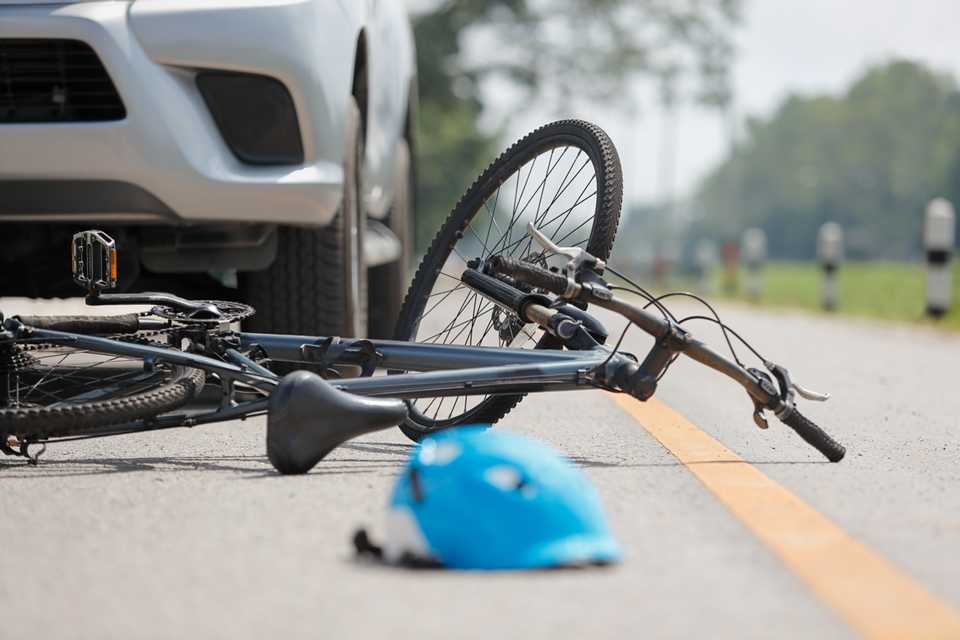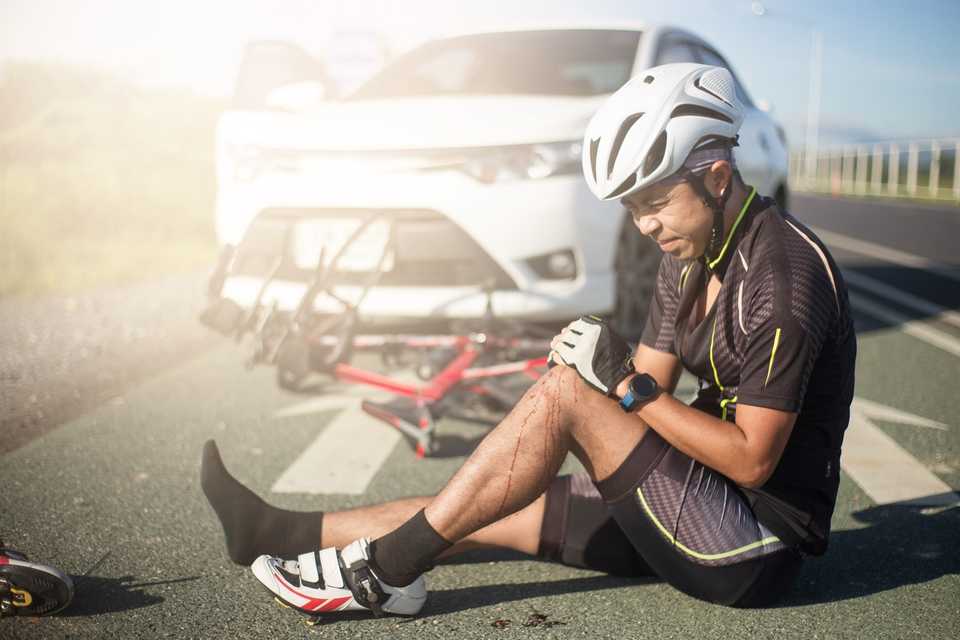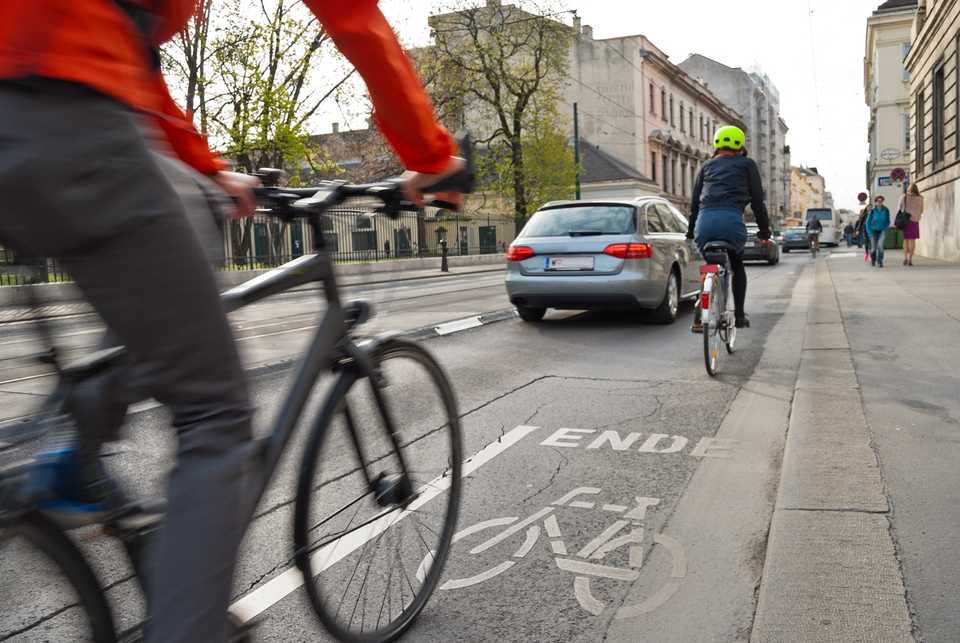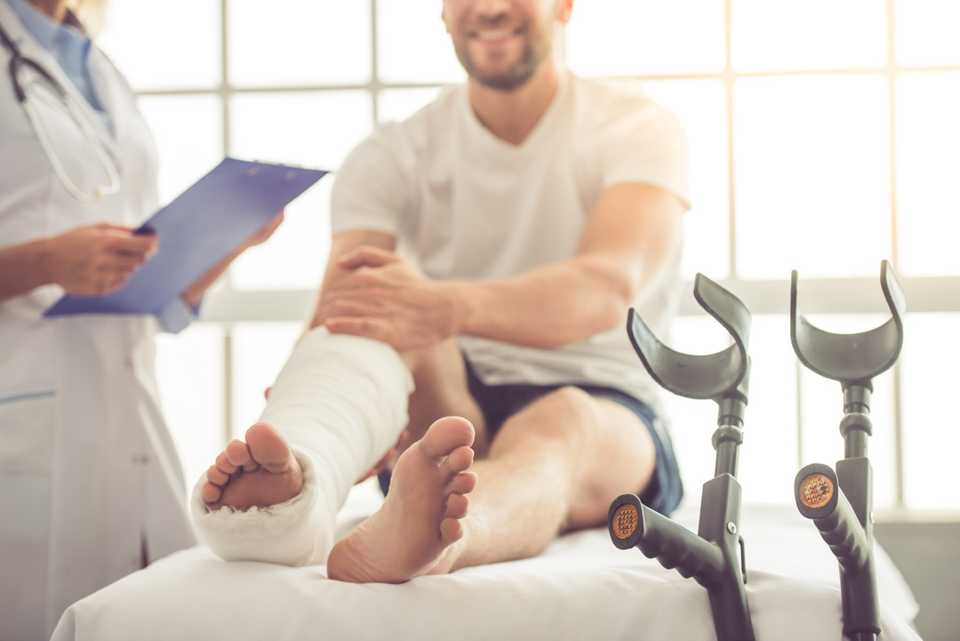Are you a fan of biking? Then you know that safety comes first when it comes to biking. Unfortunately, even the most careful cyclist can be involved in an accident and no one is completely immune to a car accident.
So, what happens when you are a cyclist who has been in an accident? Can you be compensated by the Société d'assurance automobile du Québec (SAAQ) in case of an accident?

You will see that accidents involving cyclists are treated differently by the law, depending on whether or not they involve a motor vehicle. When it comes to a motor vehicle accident, a cyclist can very well be covered by the SAAQ public automobile insurance plan.
What compensation is provided by the SAAQ in the event of a cyclist accident? What are your options when you experience a motor vehicle accident?
JuriGo explains everything you need to know about cyclist compensation from the SAAQ!
What are the conditions for a cyclist to be compensated by the SAAQ?
First, it's important to know that the SAAQ has the role of compensating any Quebec resident involved in a car accident, regardless of their responsibility in the accident.
According to the Automobile Insurance Act (A.I.A.), an "automobile accident" refers to any event in which bodily injury is caused by a motor vehicle, meaning any vehicle powered by a force other than muscular strength and adapted for transportation on public roads but not on rails (such as cars, trucks, buses, motorcycles, etc.).
Bodily injury, on the other hand, is defined as any harm caused by a car or its use. Therefore, to have an automobile accident, there must be involvement of a car, bodily injury, and a causal link between these two elements.
How do these elements apply to cyclists? If we follow this definition, it is clear that a bicycle is not a motor vehicle. For an accident involving a cyclist to be eligible for compensation from the SAAQ, there must be an accident involving a cyclist and a motor vehicle.
Therefore, it is not necessary for a person to be inside a motor vehicle at the time of the accident to be compensated by the SAAQ. As long as there is a causal link between the automobile accident and bodily harm, the cyclist should be able to be compensated by the SAAQ.
The cyclist did not have direct contact with the automobile, but still suffered an accident. Can they be compensated?
Now that it has been established that a cyclist can be compensated by the SAAQ if their injuries are caused by a car, it is important to look at more complex cases.
When there has been direct contact between the moving car and the cyclist, it is quite easy to conclude that we are dealing with a car accident.

But what happens in cases where there is no contact between the car and the cyclist?
For example, you were on the edge of your bike when you saw a car speeding towards you and you had to make a dangerous maneuver to get out of the way. In doing so, you end up in a ditch and get injured. Does this situation open the door to compensation, even if you didn't come into contact with the car?
The answer is yes. This is an in extremis maneuver, meaning a maneuver made by the cyclist to avoid being hit by a car, but who gets injured during the attempt.
A cyclist can be compensated by the SAAQ in the event of an in extremis maneuver if certain conditions are met:
- The cyclist was facing a dangerous situation;
- The presence of the automobile caused the dangerous situation;
- There is a causal link between the dangerous situation and the in extremis maneuver of the cyclist.
Thus, it is not necessary for the cyclist to prove that there was direct contact between the vehicle and the cyclist, as long as he can demonstrate that the cause of the damages is the automobile.
What happens if the cyclist is responsible for the accident?
Just like with car accidents involving one or more vehicles, the L.a.a. provides compensation for bodily injuries regardless of responsibility. Therefore, regardless of whether it was the cyclist's fault or responsibility that caused the accident, they can still be compensated for their injuries.

The SAAQ liability regime is limited to compensating for bodily injury.
If a cyclist wishes to be compensated for their property damage suffered in a car accident - for example, for the damage to their bike - they must go to civil liability courts to obtain compensation to repair their damage.
It is only at this point that the question of the cyclist's responsibility will arise: if they caused, in whole or in part, the accident, they will not be compensated for all the material damages suffered.
What are the compensation procedures for cyclists in case of an accident?
The compensation procedures for cyclist bodily injury will be the same as those for any car accident . To obtain compensation, you must absolutely file your claim with the SAAQ within 3 years following the accident in order to respect the prescription period of your recourse.
The SAAQ will assess your case to determine the severity of your injuries. For this evaluation, the SAAQ will determine if you have suffered a permanent impairment to one of the 25 functional units it recognizes.
This step is very important, because if you want your compensation to be commensurate with your damages, the SAAQ's evaluation must be consistent with your damages. If you do not agree with this evaluation, you can always contest the SAAQ's decision.
To determine compensation related to your bodily injury, the SAAQ uses a tool called the Regulation respecting lump-sum compensation for non-pecuniary damage . In order for the SAAQ to assess your damages, you must be consolidated, meaning that your injuries are stabilized, but not completely healed.

With the help of its Regulation, the SAAQ relies on different severity classes for each conventional unit that has been impacted during the accident. The SAAQ will identify which severity class your injury belongs to in order to determine the amount of your compensation for bodily injury. This severity class also allows the SAAQ to determine your ability to reintegrate into your job.
Disagree with a decision of the SAAQ? No problem, because you can contest a decision of the SAAQ at any stage of the process. A lawyer specialized in recourse against the SAAQ can help you at every step of your efforts, be it to ensure that the SAAQ's evaluation is compliant or to contest its decisions.
Find a lawyer for your claim to the SAAQ with JuriGo!
If you're a cyclist who has been involved in an accident with a motor vehicle, know that you can be compensated by the SAAQ for all your bodily injuries, just like a motorist. It's simply a matter of being able to demonstrate a causal link between your bodily harm and the accident involving a motor vehicle.
So, it's not necessary for there to have been direct contact with the automobile for it to be concluded that there was an automobile accident: a last-minute maneuver that caused you injury can also open the door to compensation from the SAAQ.
Once this is established, you can make your claim with the SAAQ so that they can evaluate your bodily injuries and determine the amount of your compensation. It is possible that you may not agree with one or more of the SAAQ's conclusions.
What should you do in this case? It's simple, contact an administrative law lawyer specialized in disputes against the SAAQ! This is the expert you need for all your claims and disputes related to the SAAQ. It's better to have all the odds in your favor, especially when your compensation is at stake.
And how do you find a lawyer specialized in SAAQ cases? No need to look any further, JuriGo is here for that!
All you have to do is fill out the form below, explaining your situation - it's free and without obligation!
We will then ensure that you are put in touch with a lawyer specializing in SAAQ recourse in your region.
